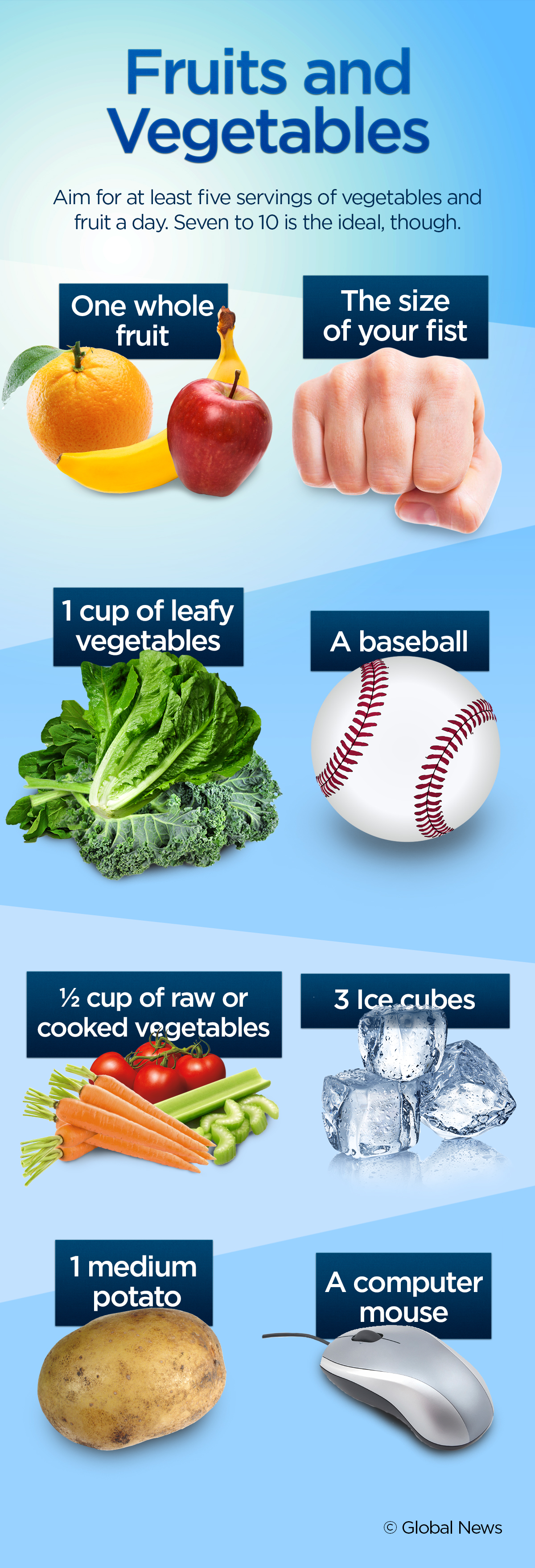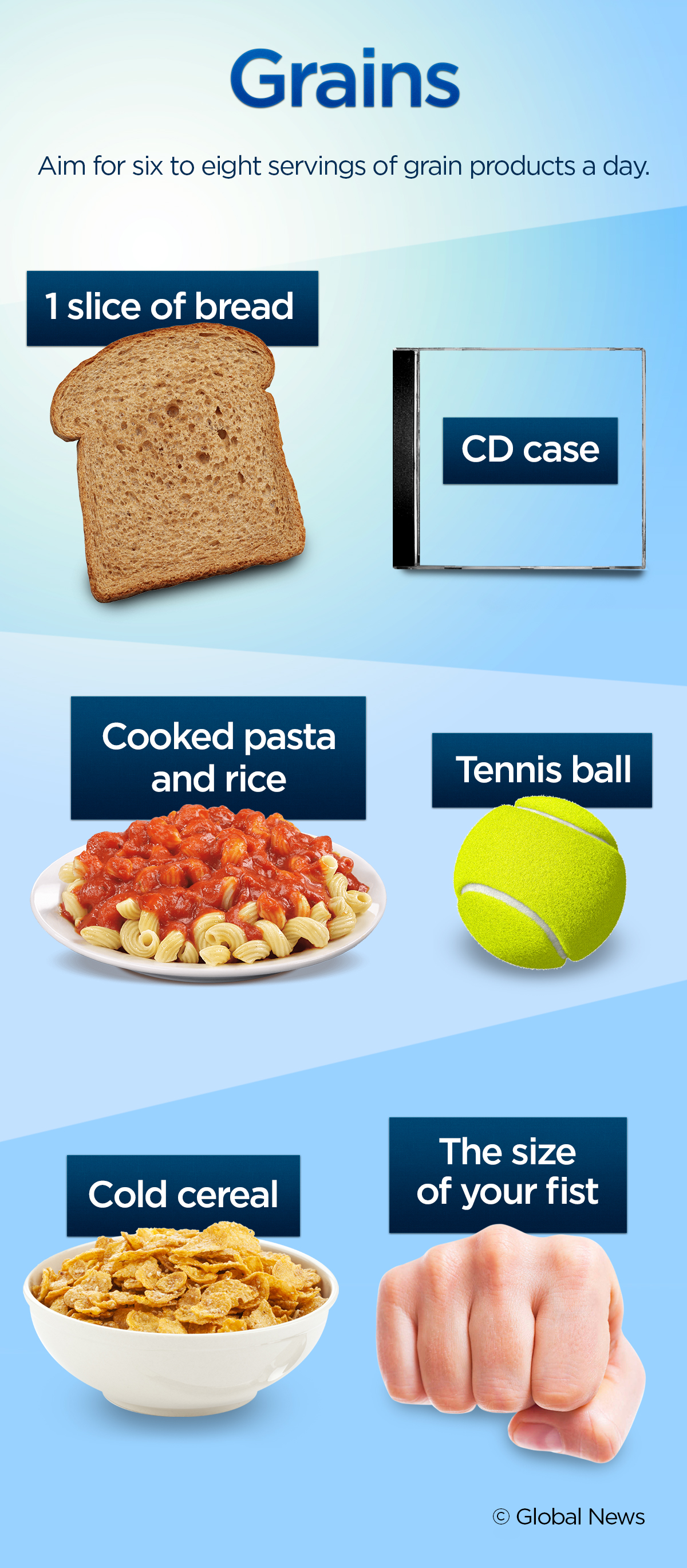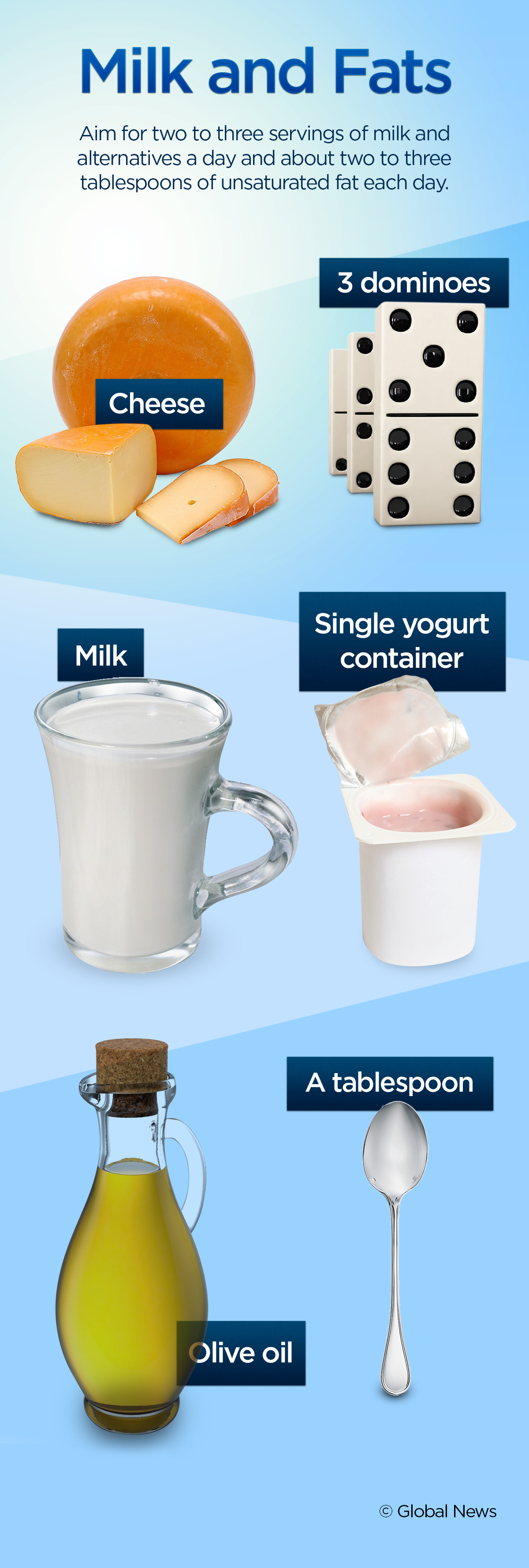When you’re at the dinner table, it’s hard not to pile your plate high with pasta, steak or mashed potatoes. While you may be polishing off a single plate during mealtime, do you know how many servings of each food group you’re actually eating?

“It’s very tricky. A lot of the times, we think of the plates we eat off of as proper portions but that doesn’t mean that’s the amount an individual serving is,” warned Andrea Miller, a registered dietitian and spokeswoman for the Dietitians of Canada.
“It’s OK to get more than one serving at a time but it’s easy to get out of hand. The way we eat pasta in this country is as a meal and not a side dish. It’s about two or three cups of spaghetti at dinner with some sauce, some meat, and a slice or two of garlic bread. That’s eight servings of grains in a meal,” she explained.
READ MORE: 6 misconceptions about nutrition and healthy eating
If you’re trying not to overeat, take a look at what an average serving size should look like and how many servings you should aim for in a day.
Miller tells her clients to make fruit a part of their two daily snacks, whether it’s an apple after lunch or grapes paired with cheese and almonds after work. At least a serving of vegetables needs to be worked into each meal, too. That could mean lettuce, tomatoes, cucumbers and onions in a sandwich with a side salad (that’s about two to three servings) or grilled vegetables paired with a lean meat at dinner.

WATCH ABOVE: What does a tennis ball and a deck of cards have to do with proper food portions? Registered dietitian Andrea Miller explains.
“By the end of the day, that’s already five servings. Half of Canadians don’t even get this much fruits and vegetables in their diets now,” Miller said.
While experts call for six to eight servings of grains per day, this varies depending on age and stage of life. A growing teen may need more fuel from grains while kids may need less and adult servings will depend on how active they are, Miller said.
- Buzz kill? Gen Z less interested in coffee than older Canadians, survey shows
- Naloxone-resistant street drug linked to 9 deaths in Eastern Canada seized in Alberta
- Bird flu risk to humans an ‘enormous concern,’ WHO says. Here’s what to know
- ‘She gets to be 10’: Ontario child’s heart donated to girl the same age
Fifty per cent of your grain choices should be from whole grains, such as brown rice, whole grain pasta, cereal and bread. The whole grain includes the outer skin of the kernel (the bran), the vitamin-packed, protein and fat-rich sprout (or the germ) and the endosperm, packed with minerals and carbohydrates.
READ MORE: In a rush? Here’s what to eat for breakfast in the morning
The whole grains fill us up and take longer to digest, making our meal more satisfying.
It’s easy to go overboard in this category so make sure you’re reeling in your serving sizes, Miller warned. If you’re eating pasta or rice, you don’t need to eat bread or pita as a side, for example. Swap out some of the pasta for more vegetables instead.
When it comes to meat, reach for lean cuts of red meat, skinless poultry and fatty fish, such as salmon or trout. Trim visible fat when possible, too.
READ MORE: This food will make you feel fuller if you’re trying to lose weight
Meat is another category in which people tend to overeat. Think of your summertime barbecue: you could be grilling up burgers, steak, chicken wings, and hot dogs. If that’s the case, you have to stick to a protein or two when it’s time to put together your plate.
Fat is an essential nutrient and a vital part of our diets, Miller said. You don’t get much wiggle room when it comes to fat, though. Two servings of olive oil, for example, is about two tablespoons, so use this category wisely, she advised.
If you’re making a shepherd’s pie, you could sauté the onions and meat in oil, but the serving could be much more appreciated in an olive oil and balsamic vinegar dressing on top of fresh vegetables, she said.
READ MORE: Follow this one tip if you’re trying to lose weight, study suggests
When it comes to dairy, two to three servings isn’t a lot either. If you’re preparing a salad, three slices of cheese won’t seem like a lot. You’re better off grating the cheese on top of your greens to spread the wealth.
Read more about serving sizes here.
carmen.chai@globalnews.ca
Follow @Carmen_Chai








Comments